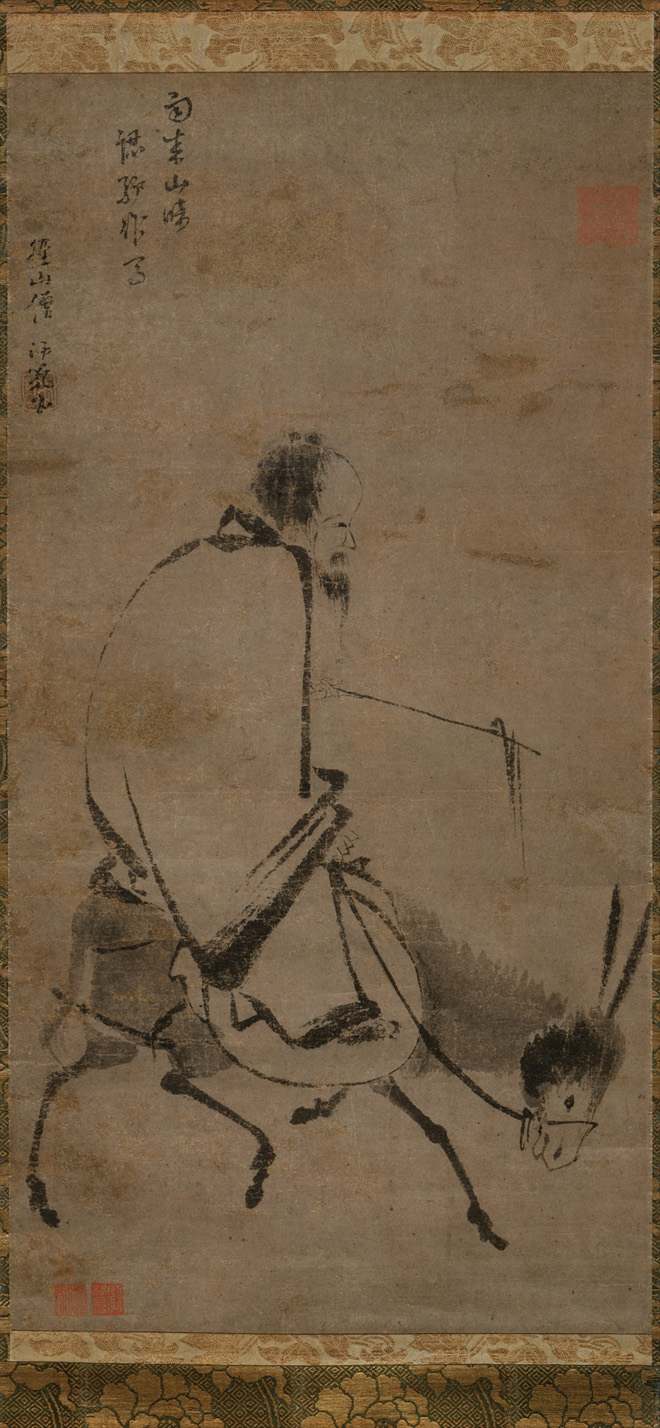Home >> Arts >> Painting >> Famous Chinese Paintings >> Anonymous: Chan Master Riding a Mule
Chan Master Riding a Mule (騎驢圖)
Anonymous, Song Dynasty (960-1279)
Hanging scroll, ink on paper, 64.1 x 33 cm, The Metropolitan Museum of Art, New York
Painted in a few swift brushstrokes and deftly applied ink washes, Chan Master Riding a Mule exemplifies the freely expressive manner of Chan (Zen, in Japanese) Buddhist painting, which relies less on descriptive detail than on the capturing of spiritual concentration within the artist to achieve a vivid depiction. Inscribed by the noted Chan master Wuzhun Shifan (無準師範), to whom it traditionally has been attributed, the painting is probably the work of a contemporary Chan artist following the sketchy brush style of Liang Kai (梁楷).
Wuzhun, well known for his wisdom as well as for his eccentric behavior, inscribed this painting while he was living at the Qingshansi, a Chan temple near Hangzhou, where he settled after he was rewarded by Emperor Lizong (r. 1225–1264) following an imperial audience. The rider's facial features-prominent forehead, mustache, and wispy beard-are not unlike those of Wuzhun himself, whose formal portrait, with an inscription by him dated 1238, is now in the Tofuku-ji temple in Kyoto. His laconic inscription may also be a self-deprecatory reference to himself:
As rain darkens the mountain,
One mistakes a mule for a horse.
(雨來山暗 認驢作馬)
